Taubenkobel: Michelin Star Dining with Local Ingredients
In addition to Amador and Steirereck am Stadtpark, while in Vienna we also had a dinner at Sacher Hotel’s Rote Bar, which specializes in traditional Austrian dishes. All three were memorable meals—see my reviews of the first two—but after all that urban sophistication, we were yearning for something more country. We found that at two places, Taubenkobel and Steirereck am Pogusch. We spent two nights at each and loved every minute of our times there. I’ll review Taubenkobel here and then Steirereck am Pogusch separately.
Taubenkobel means dovecote or, more prosaically, pigeon coop. Its name modestly understates how charming the place is.
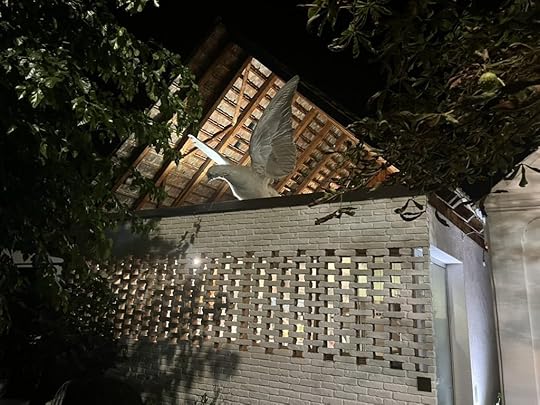
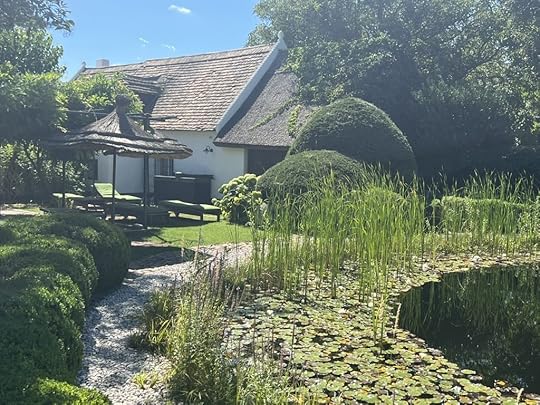
Taubenkobel is owned and run by its chef, Alain Weissgerber and his wife Barbara, daughter of the original founders, Walter and Eveline Eselböck. Under Alain’s leadership, Taubenkobel won two Michelin stars. He was named Gault&Millau’s chef of the year in 2024, an impressive honor for the tiny town of Schützen am Gebirge.
Chef Weissgerber’s menu focuses on cuisine of Austria’s Burgenland, with seasonal and foraged ingredients from the local meadows, hills, and Lake Neusiedl. Originally from Alsace, Weissgerber’s evolution as a chef included stints at Steirereck (under Heinz Reitbauer) in Vienna, Arzak (with Elena Arzak) in San Sebastian, L’Atelier de Joël Robuchon in Paris, Tantris in Munich, and Wolfgang Puck’s Spago in Los Angeles. This diverse background brought him to his focused style and strong preference for ingredients from the immediate local surroundings.
We planned to have his full tasting menu the second night of our stay, so we asked if we could have some a la carte items for our first dinner. We were especially interested in the wood-grilled whole turbot, for which the chef was apparently willing to make an exception to his locally sourced ingredients policy. They said it’s wild-caught in a Croatian bay in the Adriatic.
The size, placement and unique design of the oven/grill led me to believe it was at the heart of Alain’s cooking. They seated us at a wooden table right next to it so we could watch the show. It took only a few minutes watching him work with the wood fire to realize that he is a real master of its uses.
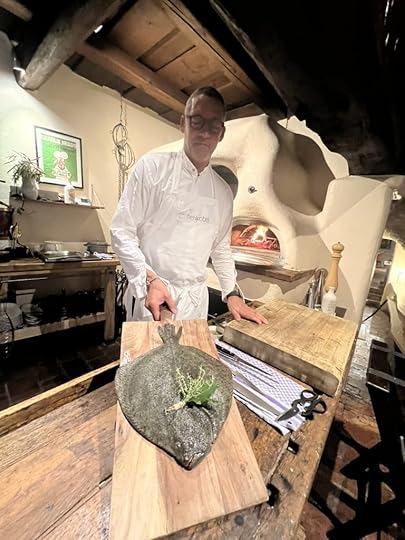
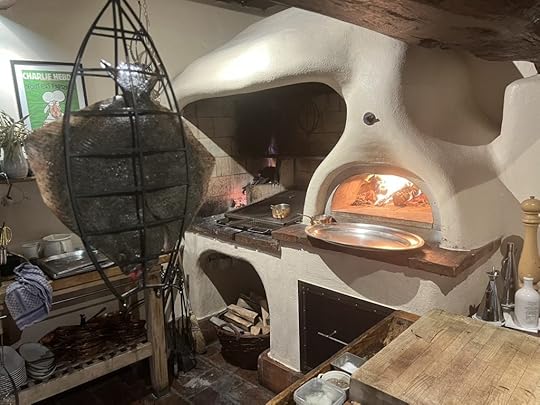
He came back and forth from the kitchen, where he was preparing a whole menu for a room full of guests, to grill the turbot for us. He also used the wood fire to make a butter caper sauce and a plateful of young artichokes. This all combined to make the tastiest turbot dish I’ve ever had.
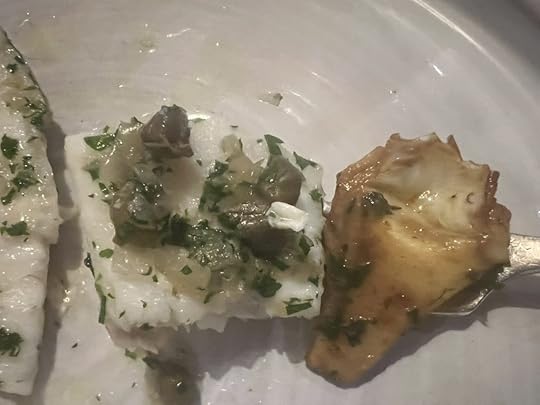
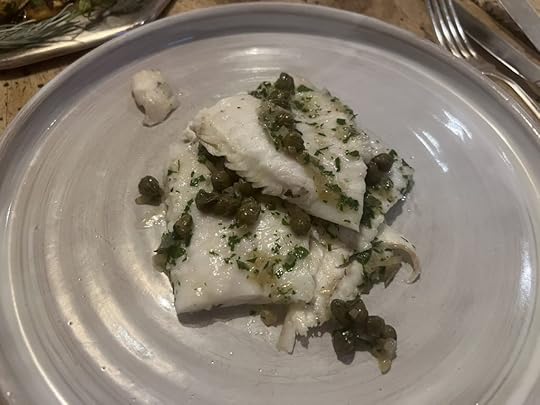
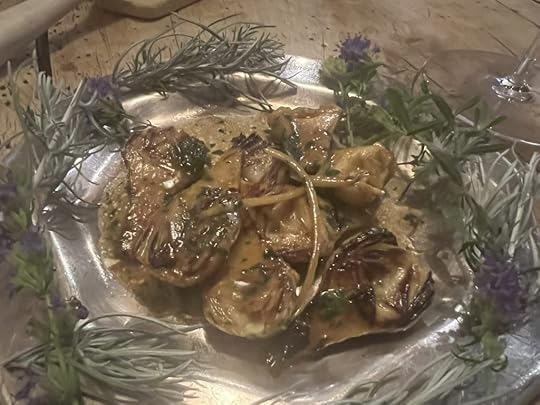 Young artichokes to accompany the turbot
Young artichokes to accompany the turbotThat night he also made a dessert for us on the wood fire simply called apple tart with hand-whipped vanilla ice cream. Do you like tarte tatin? Doesn’t everyone? Every bite of this tart is the very essence of the caramelized apple goodness that makes tarte tatin so delicious. The ice cream was spectacular. Neither the tart nor the ice cream look impressive in a photo, but if I ever find myself on death row and am asked what I want for my last meal, I will ask if it includes dessert. If so, I will order this tart of Chef Weissgerber.
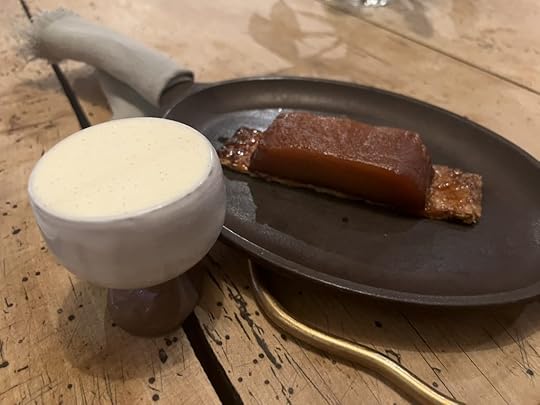
Forgive me if I’m describing dishes out of sequence. I’m carried away by my enthusiasm for Weissgerber’s food. None of it will look like anything special on Instagram. That’s because he is aiming for one thing to the exclusion of all others: deliciousness. As another example, take this a la carte starter: smoked egg with Ruster almonds and Perigord truffles. Yes, I know. It doesn’t look good. Trust me, it was incredibly tasty. The uncooked egg was smoked for a long time in the wood oven. Ruster almonds are a traditional treat of sweet smoked almonds from the nearby town of Rust. The truffles were incorporated in abundance and not shaved conspicuously on top.
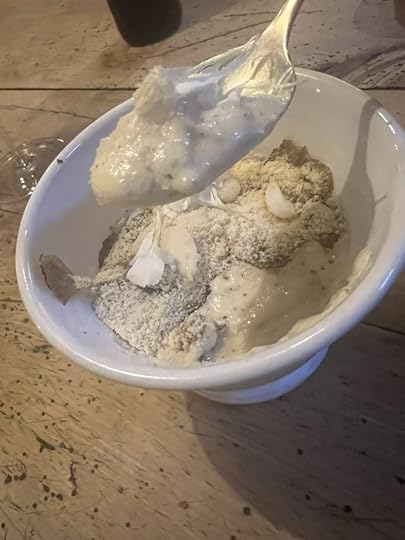
On the back of Taubekobel’s a la carte menu is a story. A little digging revealed that it’s the work of Alexander Rabl, one of Austria’s most renowned culinary writers, frequent evaluator for Gault&Millau, editor-in-chief of several food Austrian food magazines, etc., etc. His story treats fire as a character. Fire had become angry with humans for largely abandoning wood fires for cooking. It planned its revenge on humanity, but then discovered the oven of Alain Weissgerber at Taubenkobel. It happily took up residence there, feeling that it had finally found its purpose.
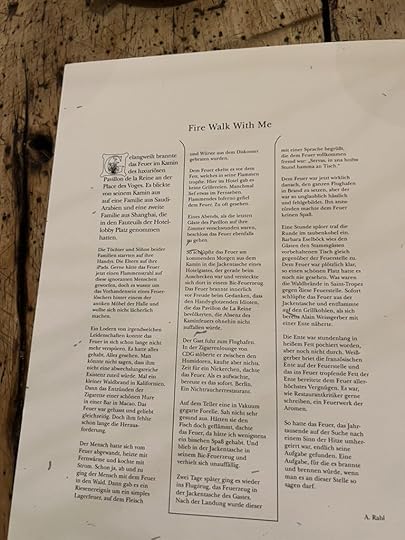
Our a la carte meal finished with a selection of cheeses from nearby farmers, each one full of character and perfectly ripe.
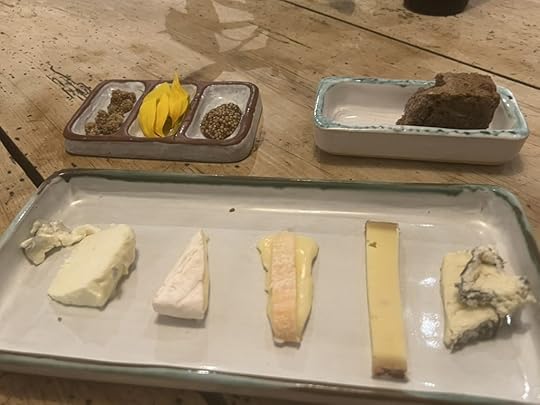
For our second evening at Taubenkobel, we had Alain’s full menu:
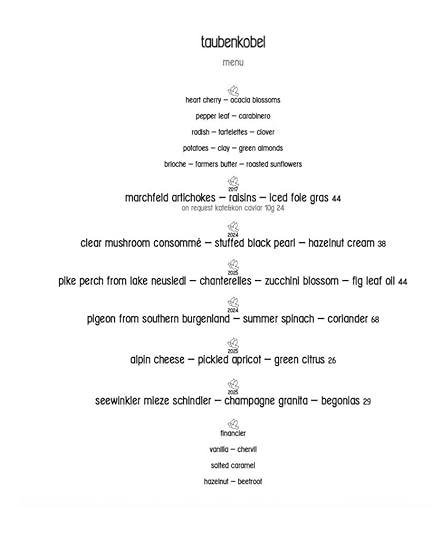
I’ll review some of the highlights:
Heart cherries (herzkirschen) are a local variety, especially big and sweet. They are topped with finely grated goose liver and acacia blossoms. Each of the three elements contrasts distinctly with the others—piquancy, earthiness and sweet fruit—a pleasing combination in this first of the amuse bouches.
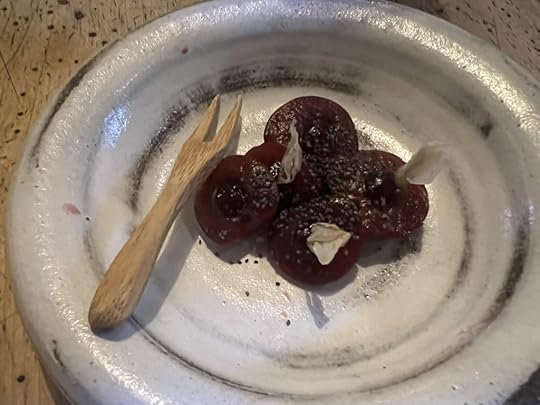
Our server suggested we fold up the pepper leaf around the lightly marinated carabineiro and its condiments and eat it like a taco. Pepper leaf (Pfefferblatt, foraged locally) imparted a subtle spicy, herbal, and slightly anise-like flavor to the excellent prawn.
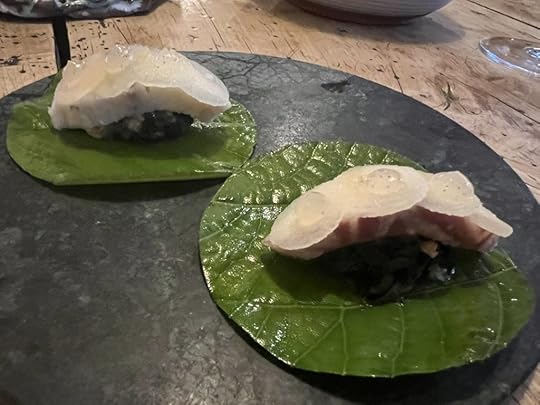
In the next amuse, thinly sliced radish and foraged clover leaves, drizzled with lovage oil, topped a goat cheese mouse in a delicate tartlet, a taste-awakening combination.
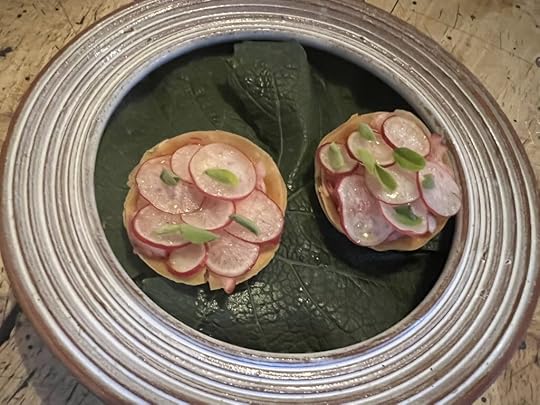
The next was the least visually appealing but, as it turned out, my favorite taste experience of the four amuse bouches. Little roasted potatoes of a deeply yellow-fleshed and flavorful Styrian variety were coated with edible clay and finished in the wood-fired oven. They were to be dipped in a green almond cream. The contrast between the crunchy clay and the fluffy hot potato was interesting. Cooking potatoes in clay like this is an ancient practice dating back to the first domestication of the potato in the Bolivian Altiplano near Lake Titicaca.
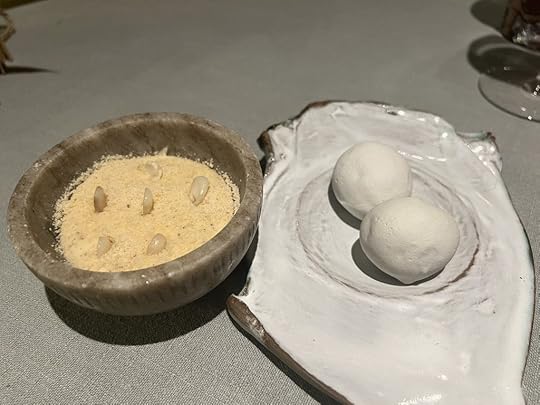
Sometimes I find that amuse bouches at top restaurants are so complex that it is hard to tell what you are eating–often a little one-bite tart of many ingredients that become indistinguishable in the mouth. This was not the case at Taubenkobel. Each amuse was distinctive, focused and comprehensible. I thought this bode well for the rest of the meal.
The first actual starter was described as marchfeld artichoke, raisins and iced foie gras. Tender young artichoke leaves were individually arranged into a bouquet. Some barely raisinified grapes hid inside. The server dusted the arrangement with finely grated shavings of iced foie gras. The three ingredients went so naturally together it made me wonder why I’d never had this combination before.
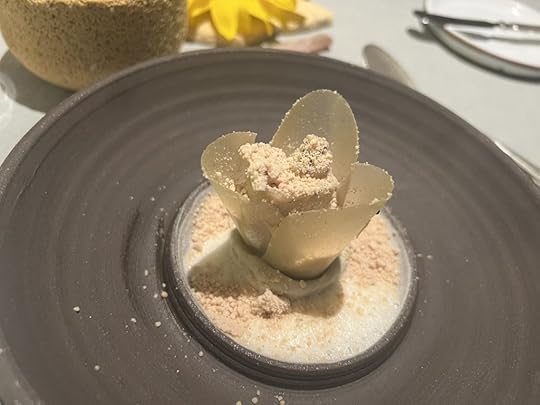
A small serving of caviar accompanied the artichoke dish.
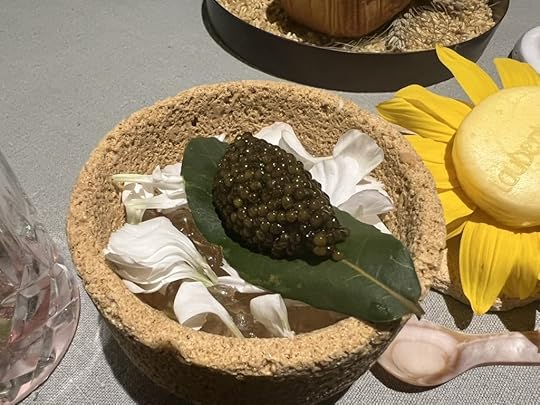
Next came a cup of consommé of lion’s mane mushroom, reduced to an extreme concentration level of mushroomy essence. Along with it was a black pearl king oyster mushroom filled with hazelnut cream. Both the lion’s mane and the black pearl are exceptionally flavorful mushrooms. The combination highlighted their different tastes and made a statement about how varied and delicious mushrooms can be.
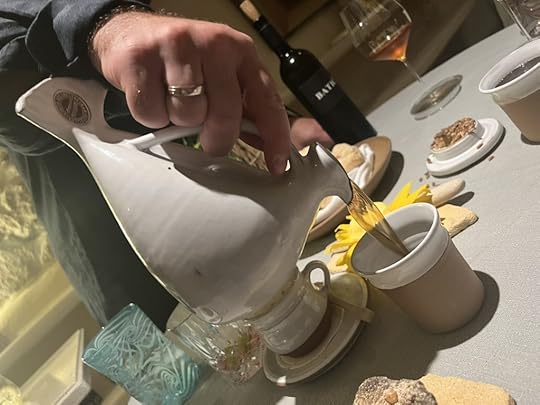
Note the dove-shaped pitcher, a cute reference to the name Taubenkobel.
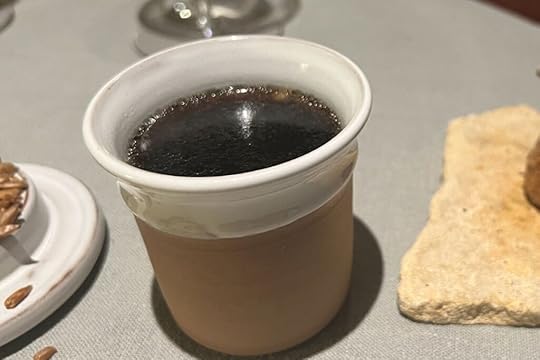
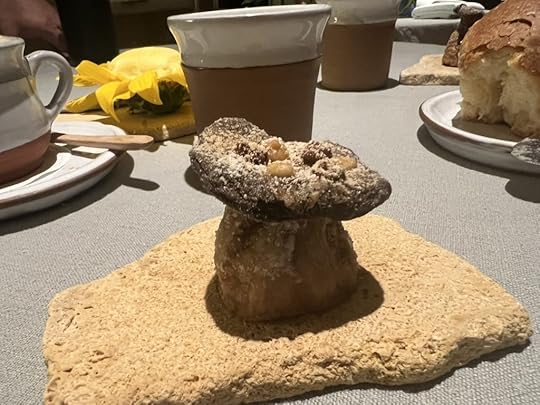
The next dish was pike-perch (zander) with zucchini blossom, chanterelles and fig leaf oil. The fish is caught by local fishermen in the Neusidlersee, just a few miles away, and delivered same-day to the restaurant. It looked raw but I think it was lightly marinated, giving it a nice texture but not hiding the ultrafreshness. I don’t understand fig leaf oil. I’ve been seeing it used by a number of chefs. It has an intense green color, beautiful on the plate, but not much of a distinctive taste.
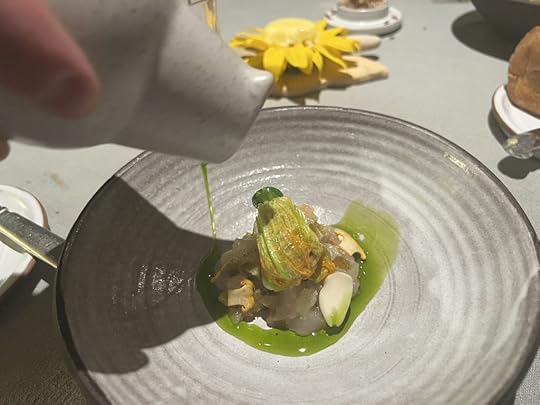
Pigeon from southern Burgenland with summer spinach and coriander was excellent. The pigeons are dry aged in a little room right next to the wood-fired oven and grill where they were cooked. This was to me the best dish of the meal, not counting the previous day’s turbot, which was in a class by itself. I attribute the excellence of the pigeon to Alain’s delicate skill with wood fire cooking. Like he did with the turbot, he used the different effects of the wood grill and the oven to bring out the best in the pigeon, giving a nice crust while maintaining the tenderness of the meat. The freshness of the spinach and coriander and the richness of the demiglace-like pigeon sauce added to the perfection of the dish.
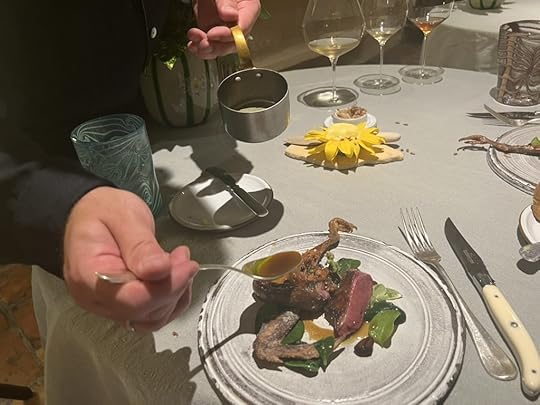
As a bridge to dessert, we were served an alpin cheese and pickled apricot dish. Apricots are celebrated in Burgenland and the cheese was from a nearby farm. Both were delicious.
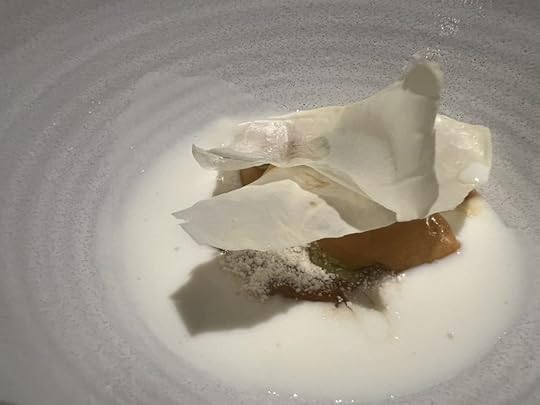
The dessert was described as Seewinkler Mieze Schindler, champagne granita, begonias. Mieze Schindler are a treasured variety of strawberry grown by the nearby Seewinkler group of small farmers. They have that intense flavor of wild alpine strawberries that is sadly lacking in commercially available berries. They are so beloved in Burgenland that it was thought unnecessary to mention on the menu that they are strawberries. Alain Weissgerber featured local ingredients in every dish of this menu, and it’s fitting that he concluded it with a local delight that is so fragile that it doesn’t travel beyond the area.
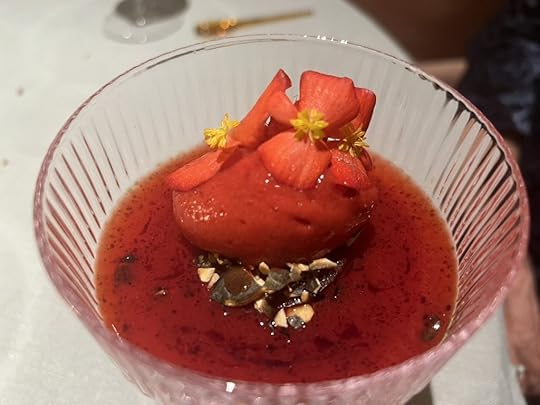
I recommend Taubenkobel wholeheartedly. Its regional focus, the care taken in selecting ingredients, the chef’s skill with wood fire cooking, and the exceptional charm of the inn all make it a one-of-a-kind experience.
Vedat Milor's Blog
- Vedat Milor's profile
- 23 followers



